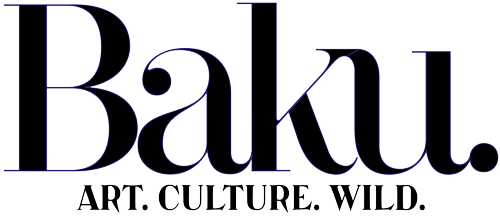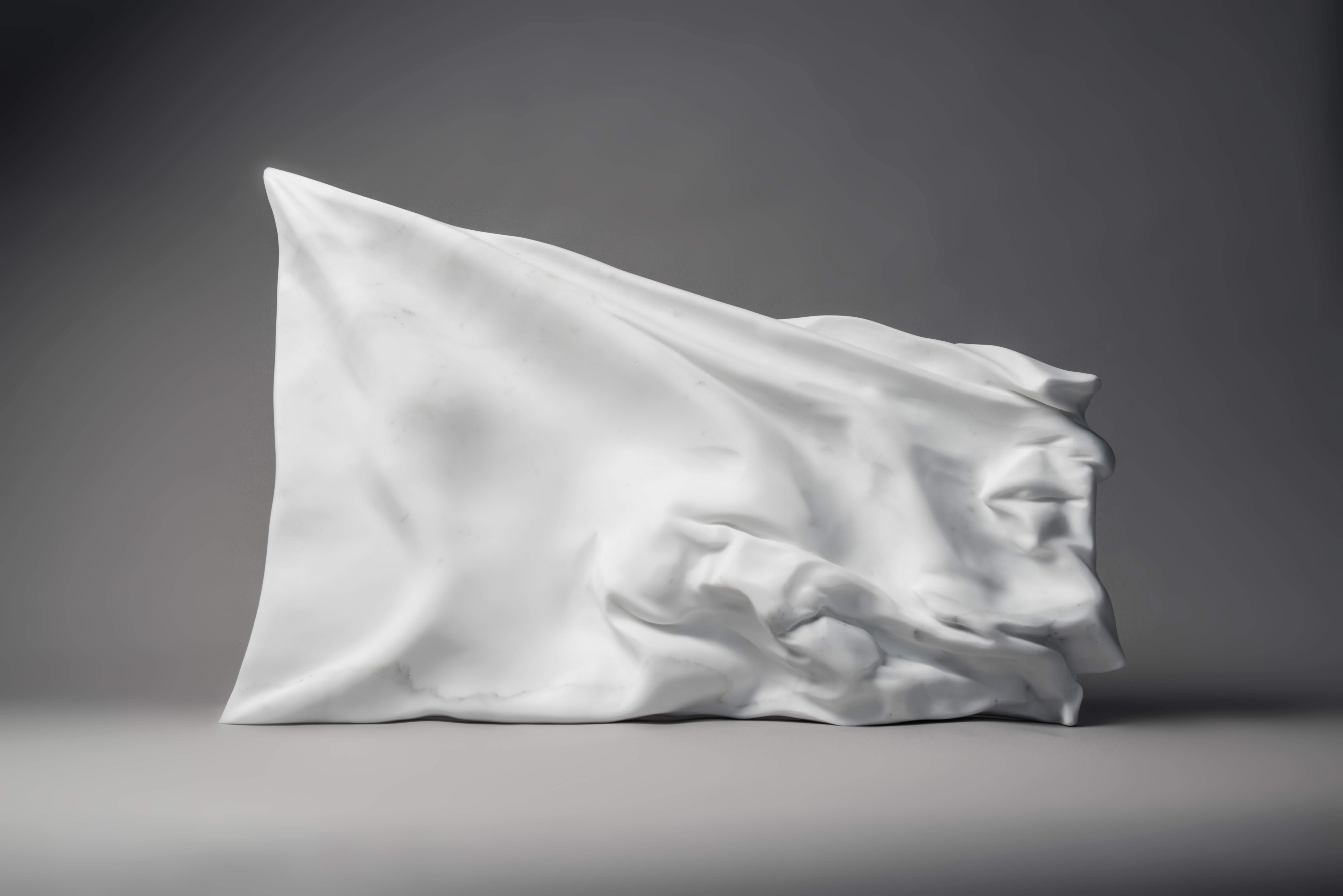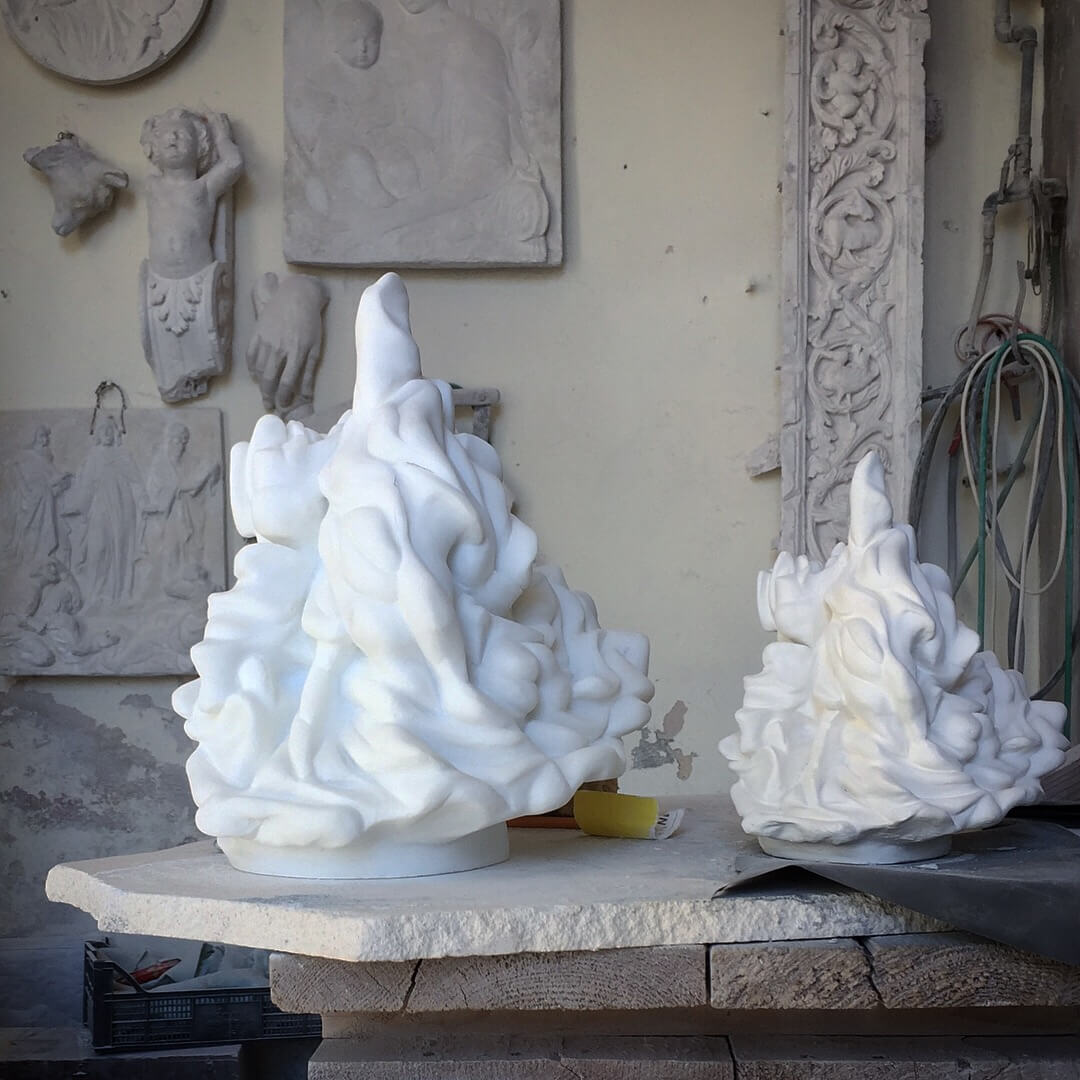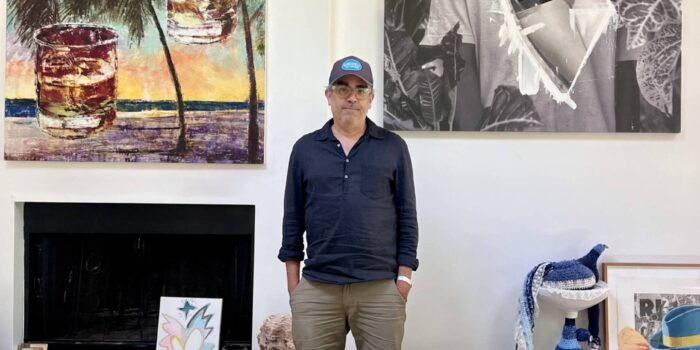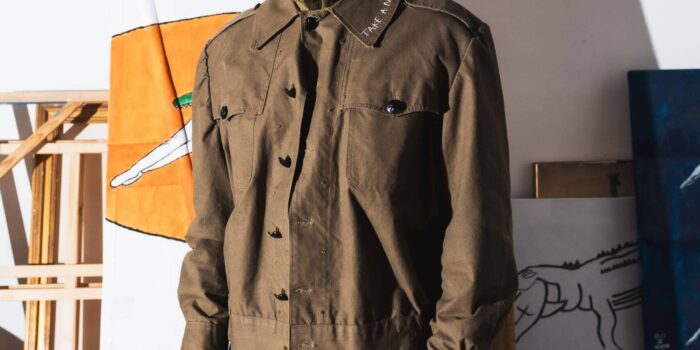For British artist Richard Stone, paint, marble and bronze offer the perfect media through which to explore the changeability of history and mankind, as well as the enduring power of nature. Anna Wallace-Thompson speaks to him about some of his favourite works
Canvases bursting with colourful details evoke the shapes of birds, all blurred wings and beaks. Elsewhere, more muted palettes bring to life the dappled calm of forest glades and the quite particular quality of light filtered down through the canopies of trees. Sculptures, whether they be made of rarefied Statuario marble, bronze or terracotta appear as if frozen in movement – swirling swathes of fabric perfectly captured, so lifelike we expect them to move silkily in an intangible breeze, even as we stare at them in their frozen, carved state. In their stillness, they capture movement; in their abstracted shapes, they define figures. In short, the work of artist Richard Stone encompasses many opposites. In the words of the artist, they “tread at the edges of abstraction and figuration, liminality and reality, dreamscape and landscape.”
Those ‘edges’ which his work so deftly treads marry together seemingly disparate elements in a perfect balancing of opposites: the psyche and the physical, still and movement, conceptual and art historical and, most importantly, figure and landscape, the push and pull of nature versus humankind.
Stone grew up on the British coast, and today divides his time between a studio in London and one in Pietrasanta in Italy – near the famous Carrara marble quarries. This connection to nature forms much of the inspiration behind his paintings, sculptures and installations. They often centre around a sense of stopping and reconnecting – a TS Eliot-like ability to focus on the “still point of the turning world”, a sense of harmony in nature, capturing movement in static works with an uncanny ability to create seemingly liquid folds in marble and stone – either in rippling flags, or the whirling folds of a dancing dervish’s robes.
Stone does not limit himself to only marble. In his 2014 bronze sculpture when a land becomes a sea, he paid homage to the iconic craggy cliffs of romantic artist Caspar David Friedrich. More recently, the delicately rendered in the shade of the magnolias (displayed at the 2018 Royal Society of Sculptors summer exhibition), pays homage to the ancient tree, taking casts Stone took of magnolia buds and branches near his Italian studio, rendered in bronze and reconfigured into an elegant wall piece, complete with loose petals on the floor below, as if shed by the tree, reminding us of the fragility and transient nature of all living things.
Here, Stone shares with Baku some of his favourite nature-oriented pieces and the themes and elements they explore.
the mountain
Carved from the material of the mountain, the marble flag you see in the main image above, entitled only in the ruins will you be free, reflects on nature’s boundaries and man’s territories. If we imagine a flag bearer claiming a mountain, I provoke a question as to the relevance of that position in the first place. Indeed, I hope that the flag’s frozen movement captures the fallibility of permanence.
The second flag in this series will be released in 2019.
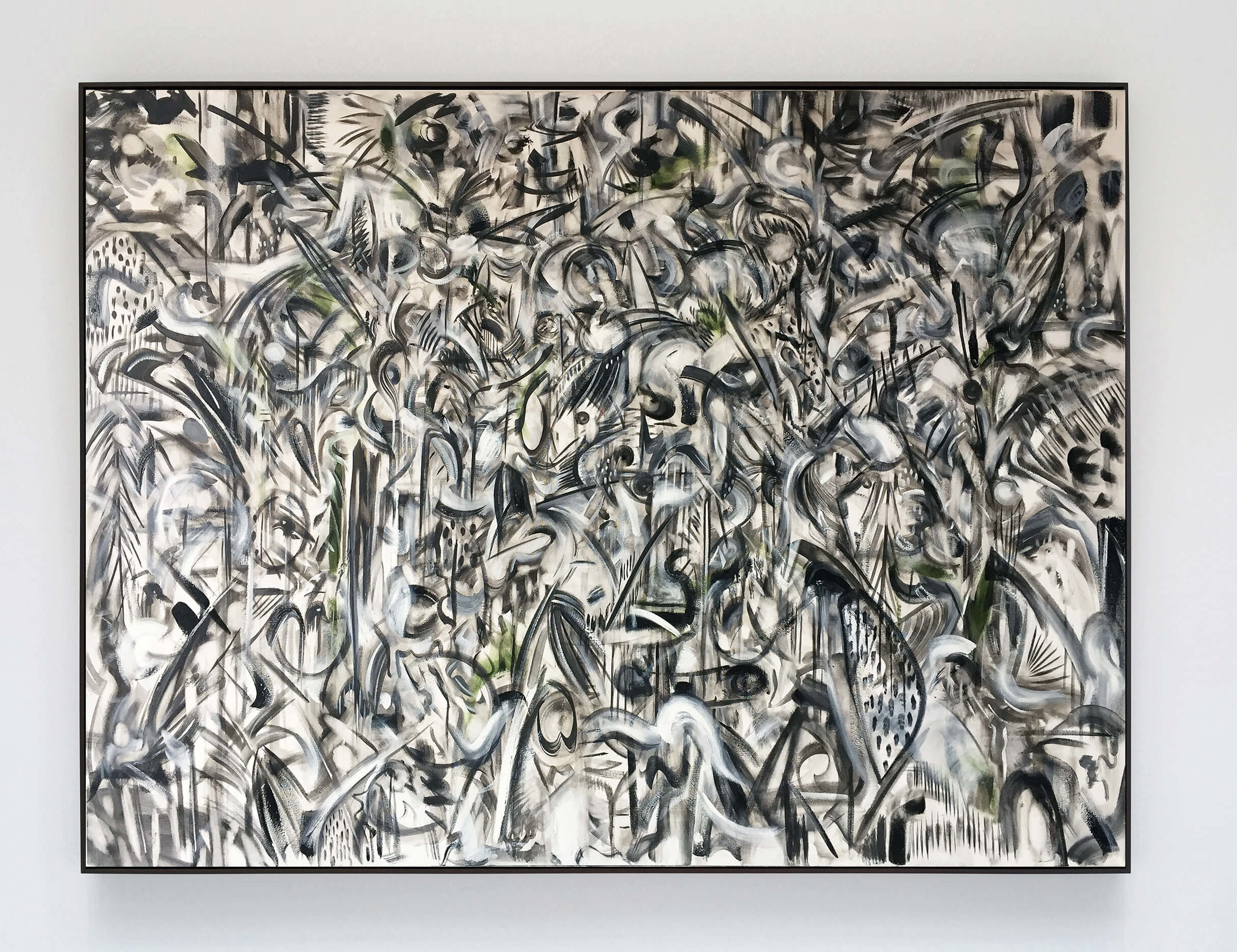
his key monochrome, 2018, oil, oil stick on canvas, with ivy overprint, tulip wood moulding, dark oak finish, 94 x 124 x 4 cm
the forest
Forests are traversed, but can also be places of transformation, and his key monochrome attempts to connect to the rhythm of that shape shifting. The near black and white palette of this work reflects the end of the sun setting and the moon rising. Look closer, perhaps it can be seen that not everything in the forest is asleep. I guess there could be something of Krasner’s Gothic Landscape in view.
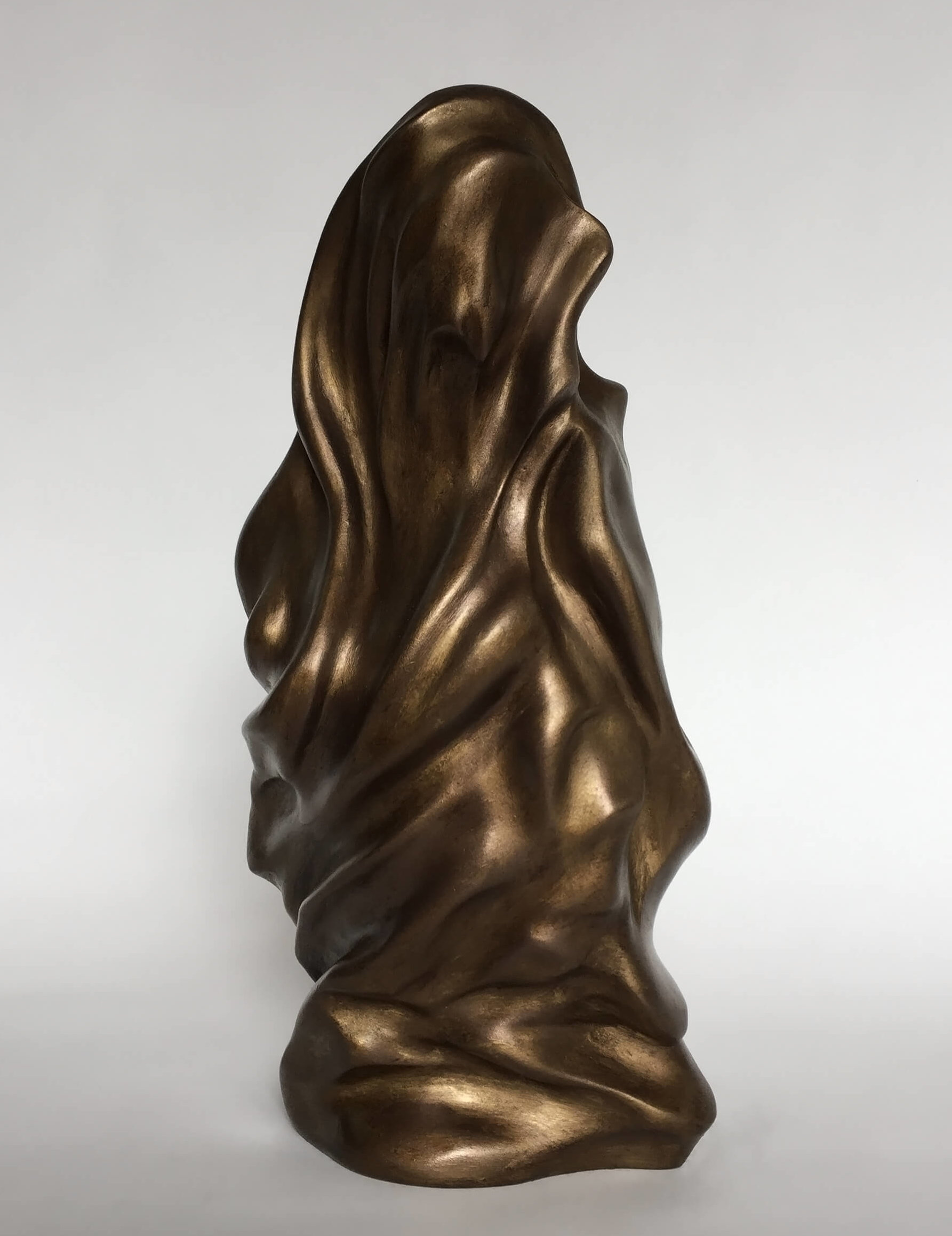
bird gerhl, (ed 1, private collection) 2017, bronze resin composite, 35 x 25 x 20 cm (ed. 2/3 + 1AP)
the bird
Was there ever such a symbol of nature in motion as the bird? Its presence, whether physical, metaphorical or allegorical, is transcendent. In this work, bird gerhl, the bird emerges from beneath a cape, sacred, powerful and echoing all sorts of art historical and literary references. The work is included in Art Dubai, March 2019 with Kristin Hjellegjerde Gallery.
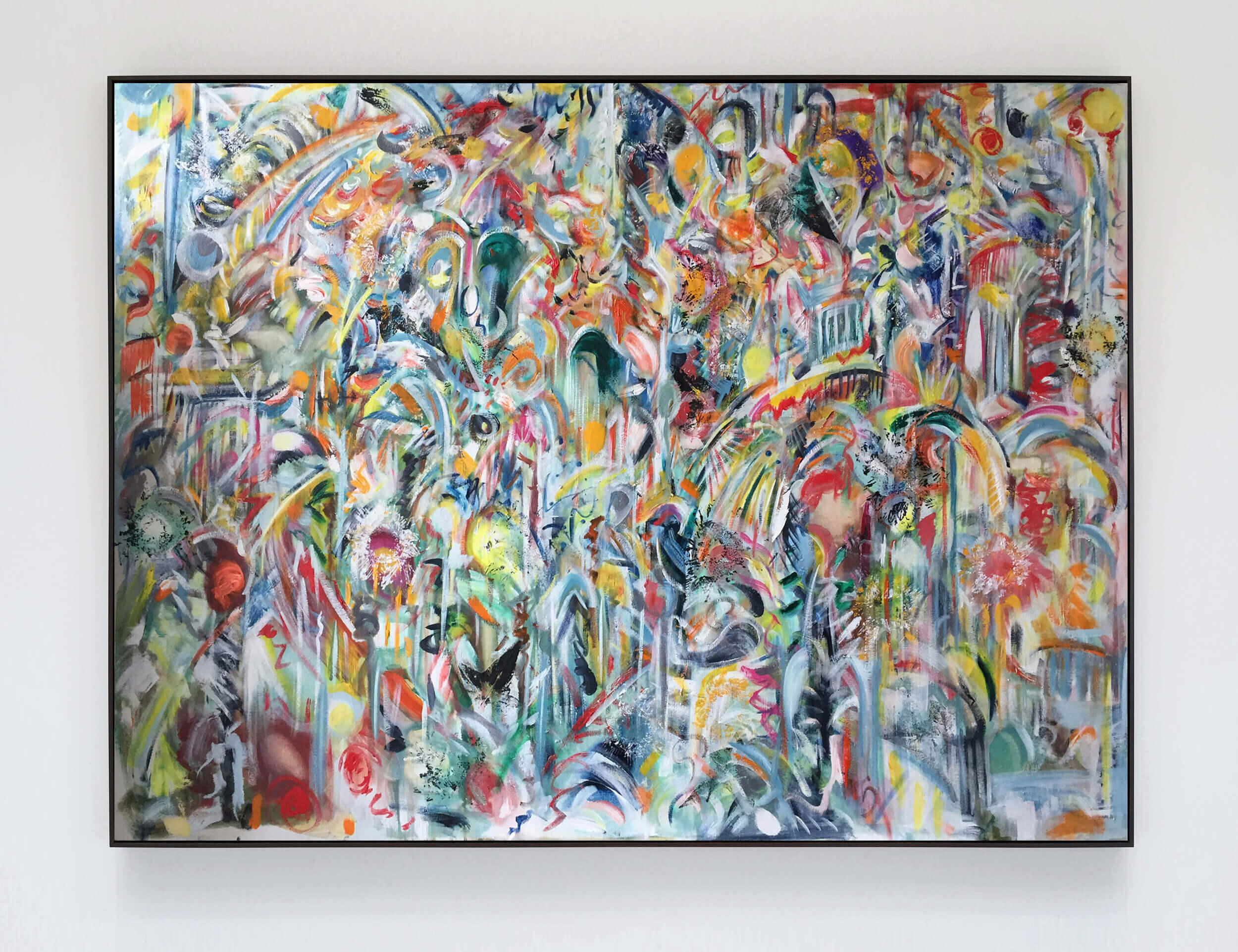
locket, 2018, oil, oil stick on canvas, ivy, sunflower overprint tulip wood moulding, dark oak, finish 90 x 120 x 4 cm
the sun
For me, the light of the sun in a way transcends landscapes, be they European or otherwise, while at the same time including them. In the painting locket, these works speak to the emergence of a new day. An awakening, of sorts.
the ethereal
In all of my works I attempt to explore something powerful or sublime in nature, that also comes out of history and culture. The figure in i want to be a sufi dancer connects an idea of movement to the universal, collapsing and rising here in the light and crystalline clarity of statuario marble. This particular style of abstracted figuration is recurrent in my practice, and I’m working on several new works in this style in my Italian studio.

passing through a parlour of winter trees (private collection), 2017, oil, oil stick on linen, tulip wood moulding, white finish, 62 x 82 x 4 cm
the light
Whilst nature is often bold and bursting with colour, it’s also in subtle layers of light. If we’re prepared to pause, that beauty may be revealed. Here, the painting passing through a parlour of winter trees depicts a winter scene, and flickering pastel light glows and breaks through with the promise of spring. The brush stroke gives way to animals passing through trees illuminated equally by sun and moon.
For more information visit richardstoneprojects.com
Images courtesy of the artist
Like this? Then you’ll love: Eight artists working with unexpected materials
